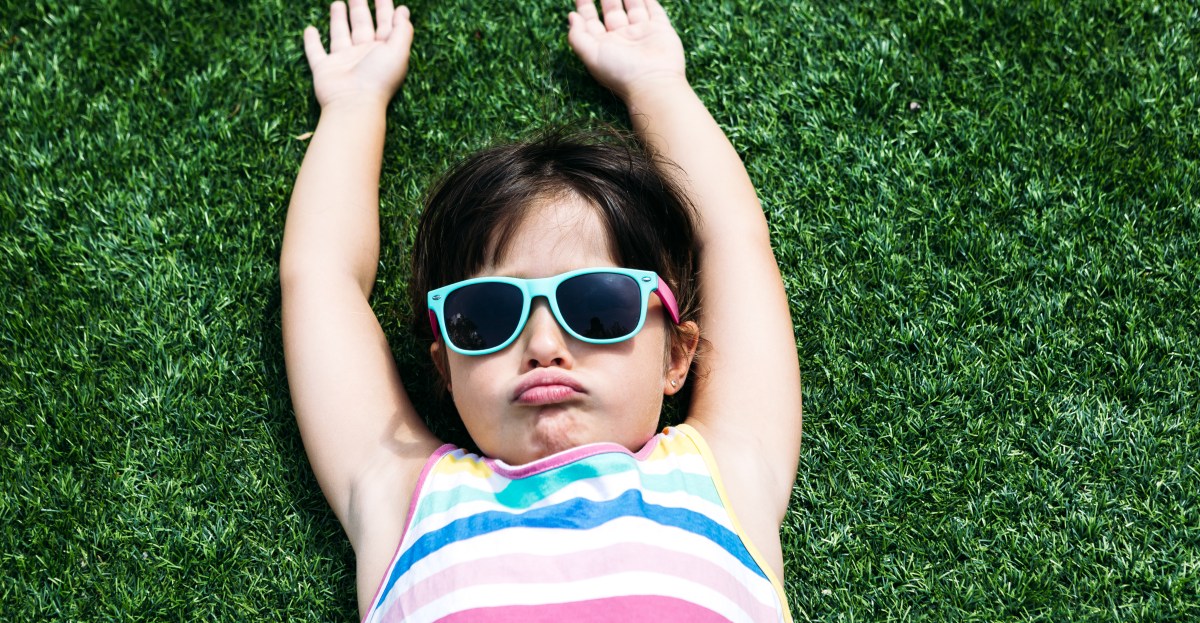This story originally appeared in Kids Today, Vox’s newsletter about kids, for everyone. Sign up here for future editions.
As a millennial, I had my fair share of ’90s summers. I rode my bike, I read, I spent a lot of time doing nothing. My friends from home like to tell the story of the time they came by my house unannounced and I was staring at a wall (I was thinking).
Now, as a parent myself, I’ve been highly invested in the discourse over whether it’s possible for kids to have a “’90s summer” in 2025. This year, some parents are opting for fewer camps and activities in favor of more good old-fashioned hanging around, an approach also described as “wild summer” or “kid-rotting.”
On the one hand, sounds nice! I liked my summers as a kid, and I’d love to give my kids more unstructured playtime to help them build their independence and self-reliance (and save me money and time signing up for summer camp).
On the other hand, what exactly are they going to do with that unstructured time? Like a majority of parents today, I work full time, and although my job has some flexibility, I can’t always be available to supervise potion-making, monster-hunting, or any of my kids’ other cute but messy leisure activities. Nor can I just leave them to fend for themselves: Norms have changed to make sending kids outside to play til the streetlights come on more difficult than it used to be, though those changes started before the ’90s. The rise of smartphones and tablets has also transformed downtime forever; as Kathryn Jezer-Morton asks at The Cut, “Is it really possible to have a ’90s summer when YouTube Shorts exist?”
After talking to experts and kids about phones and free time, I can tell you that the short answer to this question is no. But the long answer is more complicated, and a bit more reassuring. Yes, kids today reach for their devices a lot. But especially as they get older, they do know how to put them down. And hearing from them about their lives made me rethink what my ’90s summers really looked like, and what I want for my kids.
Kids’ free time is different now
Parents aren’t imagining the differences between the ’90s and today, Brinleigh Murphy-Reuter, program administrator at the Digital Wellness Lab at Boston Children’s Hospital, told me. For one thing, kids just have less downtime than they used to — they’re involved in more activities outside of school, as parents try to prepare them for an increasingly competitive college application process. They’re also more heavily supervised than in decades past, thanks to concerns about child kidnapping and other safety issues that began to ramp up in the ’80s and continues today.
Free time also looks different. “If you go back to the ’80s or early ’90s, the most prized artifact kids owned was a bicycle,” Ruslan Slutsky, an education professor at the University of Toledo who studies play, told me. Today, “the bike has been replaced by a cell phone.”
The average kid gets a phone at the age of 10, Murphy-Reuter said. Tablet use starts even earlier, with more than half of kids getting their own device by age 4. If kids are at home and not involved in some kind of structured activity, chances are “they’re on some kind of digital device,” Slutsky said.
It’s not as though all millennials had idyllic, screen-free summers — some of my best July memories involve Rocko’s Modern Life, for example. But kids’ screen time is qualitatively different now.
According to a Common Sense Media report published in 2025, 35 percent of viewing for kids up to the age of 8 was full-length streaming TV shows, while 32 percent was on platforms like YouTube. Sixteen percent were short-form videos like TikToks, Instagram Reels, or YouTube Shorts. Only 6 percent of kids’ viewing was live TV, which honestly seems high (I am not sure my children have ever seen a live TV broadcast).
It’s not completely clear that YouTube is worse for kids than old-fashioned TV, but it can certainly feel worse. As Jezer-Morton puts it, “kid rotting in the ’90s was Nintendo and MTV; today’s version is slop-engineered for maximum in-app time spent.”
It is undeniably true that in the ’90s, you’d sometimes run out of stuff to watch and be forced to go outside or call a friend. Streaming means that for my kids’ generation, there is always more TV.
And the ubiquity of phones in both kids’ and adults’ lives has made enforcing screen time limits more difficult. “It’s tough to take away something that they have become so dependent on,” Slutsky said.
Older kids can be remarkably savvy about their screen time
The good news is that a lot of what kids do on their devices isn’t actually watching YouTube — it’s gaming. Kids in the Common Sense survey spent 60 percent of their screen time playing games, and just 26 percent watching TV or video apps.
Gaming can actually have a lot of benefits for kids, experts say. “Video games can support relationship building and resiliency” and “can help to develop complex, critical thinking skills,” Murphy-Reuter said. Some research has found that educational media is actually more helpful to kids if it’s interactive, making an iPad better than a TV under certain circumstances, according to psychologist Jacqueline Nesi.
“Just because it’s on a screen doesn’t mean it’s not still fulfilling the same goals that unstructured play used to fulfill,” Murphy-Reuter told me. “It just might be fulfilling it in a way that is new.”
Meanwhile, kids — especially older teens — are actually capable of putting down their phones. Akshaya, 18, one of the hosts of the podcast Behind the Screens, told me she’d been spending her summer meeting up with friends and playing pickleball. “I spend a lot of my days hanging out outside,” she said.
Her cohost Tanisha, also 18 and a graduating senior, said she and her friends had been “trying to spend as much IRL time as we can while we’re still together this summer.” She, Tanisha, and their other cohost Joanne, also 18, have been enjoying unstructured summers for years — though they had internships last summer, none of them has been to camp since elementary school.
Joanne does worry that the ubiquity of short videos on her phone has affected her attention span. “I feel like it’s easy to just kind of zone out, or stop paying attention when someone’s talking,” she said.
At the same time, she and her cohosts have all taken steps to reduce their own device use. Tanisha deleted Instagram during college application season. Akshaya put downtime restrictions on her phone after noticing how often she was on it. “In my free time, if I ever feel like I’m doomscrolling, like I’ve been on social media for too long, I usually try to set a specific time when I’ll get off my phone,” she said.
Overall, 47 percent of kids have used tools or apps to manage their own phone use, Murphy-Reuter told me.
The sense I got from talking to Tanisha, Joanne, and Akshaya — and that I’ve gotten in interviews with teenagers and experts over the last year — is that teens can be quite sophisticated about phones. They know, just as we do, that the devices can make you feel gross and steal your day, and they take steps to mitigate those effects, without getting rid of the devices entirely.
Kids “really are very much in this digital space,” Murphy-Reuter said. And many of them are adept at navigating that space — sometimes more adept than adults who entered it later in life.
All that said, Tanisha, Joanne, and Akshaya are 18 years old, and talking to them made me realize that “wild summer,” at least of the unsupervised variety, may just be easier to accomplish for older kids. I can’t quite imagine letting my 7-year-old “rot” this summer. Yes, he’d want to watch way too much Gravity Falls, but he’d also just want to talk to me and play with me — normal kid stuff that’s not very compatible with adults getting work done.
It’s certainly possible that kids were more self-reliant — more able to occupy themselves with pretend play or outdoor shenanigans for long stretches of time — before they had devices. But I’m not sure how much more.
While writing this story, I realized that the lazy, biking, wall-staring summers of my youth all took place in high school. Before that, I went to camp.
The Trump administration is declining to release almost $7 billion in federal funding for after-school and summer programs, jeopardizing support for 1.4 million kids, most of them low-income, around the country.
An American teen writes about why Dutch kids are some of the happiest in the world: It might be because they have a lot of freedom.
A new study of podcast listening among low-income families found that the medium fostered creative play and conversations among kids and family members, which are good for child development.
Sometimes my older kid likes to go back to picture books. Recently we’ve been reading I Want to Be Spaghetti! It’s an extremely cute story about a package of ramen who learns self-confidence.
A quick programming note: I will be out on vacation for the next two weeks, so you won’t be hearing from me next week. You will get a summery edition of this newsletter on Thursday, July 17, so stay tuned. And if there’s anything you’d especially like me to cover when I get back, drop me a line at anna.north@vox.com!




